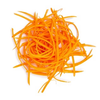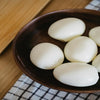If you find yourself baking often, you would know many factors that contribute to a delicious cake. From well-beaten egg whites with stiff peaks to the well-risen dough, it is a complete learning experience. Thus, nothing hurts more than seeing the cake batter get stuck inside the cake pan, so let’s learn how to grease a cake pan properly.
How to grease a pan
Tools and requirements
You will need the following items if you are learning how to grease a cake pan properly:
- You will need a cake pan of your own choice. It can be rectangular, circular, or square-based.
- You will need room temperature butter, and shortening, or an aerosol cooking spray.
- A healthy dash of flour, so your baking dough doesn’t stick to the cake pan.
- Parchment paper for the lining.
Steps
Greasing the pan
To properly grease a cake pan, begin with tearing a square or circle-shaped parchment paper. However, before that, use room temperature butter or generous droplets of cooking oil to grease the pan. Next, drop the emollient fat in the center of the pan and swirl it around.
The first step is relatively simple if you use a cooking spray. Hold it from the opposite direction and twist and turn the cake pan until it is adequately coated. Be sure to get the sides, corners, and bottom of the pan. Next, place the pan on top of the counter and spray it over.
Flouring the Pan
Now that you have greased your baking mold, it is time to flour it. Grab a generous amount of flour in your hand or sieve it over the baking pan. This is a very messy process, so wear an apron and work near or over the sink if you can. If you are sensitive to flour residue in the air, wear glasses too.
Begin flouring the pan by shaking your wrist over the mold. If you are worrying over uneven flour distribution, it’s okay. It does not need to be perfect. You are only required to cover the pan with flour. Once you have successfully performed this action, turn it upside down and hit the bottom of the mold to release the excess flour.
Lining the Mold
Now it is time to line the baking pan. You may think this step is a waste of time, but it is undoubtedly worth it when your risen dough just pops out with the help of parchment paper. The actual challenge is cutting the parchment paper according to the shape of the baking pan.
Grab your scissors; it's time to get to work.
Begin with laying down the mold or cake pan on top of the parchment paper. You can use kitchen weights to ensure it does not slide around. Next, trace the shape of the pan with a pencil or using the baking mold outline. Set the mold aside and cut the parchment paper. It should fit perfectly.
Preparing
Now grab your cake pan and place it on the counter. Grease and flour the pan if you have not already. Lay down the prepared piece of parchment paper. Now dump the prepared cake dough on top of the parchment paper and place it in the pre-heated open.
Release
After you remove the prepared cake dough from the oven, grab the parchment paper edges, and it should slide out. Do it slowly.
Now place your dough on a cooling rack to enjoy later.
Conclusion
Double greasing that involves butter and parchment paper is a God-sent technique that ensures the baking project does not scrape or fall apart. However, if you are using cake pans whose base slides off, double greasing is not a necessary step.






